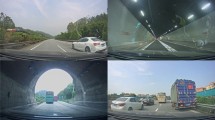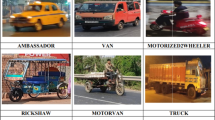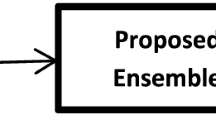Abstract
In addition to an approach of combining machine learning (ML) enhanced models and convolutional neural networks (CNNs) for adaptive CNN model selection, a thorough investigation study of the effects of 1) image brightness and 2) class-balanced/-unbalanced datasets is needed, considering image classification (and object detection) for autonomous driving in significantly different daytime and nighttime settings. In this empirical study, we comprehensively investigate the effects of these two main issues on CNN performance by using the ImageNet dataset, predictive models (premodel), and CNN models. Based on the experimental results and analysis, we reveal non-trivial pitfalls (up to 58% difference in top-1 accuracy in different class-balance datasets) and opportunities in classification accuracy by changing brightness levels and class-balance ratios in datasets.
Access this chapter
Tax calculation will be finalised at checkout
Purchases are for personal use only
Similar content being viewed by others
References
Agnihotri, A., Saraf, P., Bapnad, K.R.: A convolutional neural network approach towards self-driving cars. In: 2019 IEEE 16th India Council International Conference (INDICON), pp. 1–4. IEEE (2019)
Bojarski, M., et al.: End to end learning for self-driving cars. arXiv preprint arXiv:1604.07316 (2016)
Castillo, A., Tabik, S., Pérez, F., Olmos, R., Herrera, F.: Brightness guided preprocessing for automatic cold steel weapon detection in surveillance videos with deep learning. Neurocomputing 330, 151–161 (2019)
Clark, A.: Pillow (PIL fork) documentation (2015). https://buildmedia.readthedocs.org/media/pdf/pillow/latest/pillow.pdf
Deng, J., Dong, W., Socher, R., Li, L.J., Li, K., Fei-Fei, L.: Imagenet: a large-scale hierarchical image database. In: 2009 IEEE Conference on Computer Vision and Pattern Recognition, pp. 248–255. IEEE (2009)
García, V., Sánchez, J.S., Mollineda, R.A.: On the effectiveness of preprocessing methods when dealing with different levels of class imbalance. Knowl. Based Syst. 25(1), 13–21 (2012)
Haeberli, P., Voorhies, D.: Image processing by linear interpolation and extrapolation. IRIS Univ. Mag. 28, 8–9 (1994)
He, K., Zhang, X., Ren, S., Sun, J.: Deep residual learning for image recognition. CoRR abs/1512.03385 (2015). http://arxiv.org/abs/1512.03385
Howard, A.G., et al.: Mobilenets: efficient convolutional neural networks for mobile vision applications. arXiv preprint arXiv:1704.04861 (2017)
Ioffe, S., Szegedy, C.: Batch normalization: Accelerating deep network training by reducing internal covariate shift. In: International Conference on Machine Learning, pp. 448–456. PMLR (2015)
Kandel, I., Castelli, M., Manzoni, L.: Brightness as an augmentation technique for image classification. Emerg. Sci. J. 6(4), 881–892 (2022)
Kulkarni, A., Chong, D., Batarseh, F.A.: Foundations of data imbalance and solutions for a data democracy. In: Data Democracy, pp. 83–106. Elsevier (2020)
Laza, R., Pavón, R., Reboiro-Jato, M., Fdez-Riverola, F.: Evaluating the effect of unbalanced data in biomedical document classification. J. Integr. Bioinform. 8(3), 105–117 (2011)
Li, Y., et al.: Overcoming classifier imbalance for long-tail object detection with balanced group Softmax. In: Proceedings of the IEEE/CVF Conference on Computer Vision and Pattern Recognition, pp. 10991–11000 (2020)
Longadge, R., Dongre, S.: Class imbalance problem in data mining review. arXiv preprint arXiv:1305.1707 (2013)
Marco, V.S., Taylor, B., Wang, Z., Elkhatib, Y.: Optimizing deep learning inference on embedded systems through adaptive model selection. ACM. Trans. Embed. Comput. Syst. (TECS) 19(1), 1–28 (2020)
Mountassir, A., Benbrahim, H., Berrada, I.: An empirical study to address the problem of unbalanced data sets in sentiment classification. In: 2012 IEEE International Conference on Systems, Man, and Cybernetics (SMC), pp. 3298–3303. IEEE (2012)
Pedregosa, F., et al.: Scikit-learn: machine learning in python. J. Mach. Learn. Res. 12, 2825–2830 (2011)
Rodríguez-Rodríguez, J.A., Molina-Cabello, M.A., Benítez-Rochel, R., López-Rubio, E.: The effect of noise and brightness on convolutional deep neural networks. In: Del Bimbo, A., et al. (eds.) ICPR 2021. LNCS, vol. 12666, pp. 639–654. Springer, Cham (2021). https://doi.org/10.1007/978-3-030-68780-9_49
Tian, Y., Pei, K., Jana, S., Ray, B.: Deeptest: automated testing of deep-neural-network-driven autonomous cars. In: Proceedings of the 40th International Conference on Software Engineering, pp. 303–314 (2018)
Valueva, M.V., Nagornov, N., Lyakhov, P.A., Valuev, G.V., Chervyakov, N.I.: Application of the residue number system to reduce hardware costs of the convolutional neural network implementation. Math. Comput. Simul. 177, 232–243 (2020)
Xu, N., Huo, C., Pan, C.: Adaptive brightness learning for active object recognition. In: ICASSP 2019–2019 IEEE International Conference on Acoustics, Speech and Signal Processing (ICASSP), pp. 2162–2166. IEEE (2019)
Yarovenko, V., Park, J.G., Lee, M.H.: Re-thinking pitfalls of premodel building for adaptive CNNs model selection on imagenet. In: 2022 4th International Conference on Advances in Computer Technology, Information Science and Communications (CTISC), pp. 1–6. IEEE (2022)
Acknowledgements
This work is supported by the Nazarbayev University (NU), Kazakhstan, under FDCRGP grant 021220FD0851.
Author information
Authors and Affiliations
Corresponding author
Editor information
Editors and Affiliations
Rights and permissions
Copyright information
© 2024 The Author(s), under exclusive license to Springer Nature Singapore Pte Ltd.
About this paper
Cite this paper
Nazir, Z., Yarovenko, V., Park, JG. (2024). Effects of Brightness and Class-Unbalanced Dataset on CNN Model Selection and Image Classification Considering Autonomous Driving. In: Luo, B., Cheng, L., Wu, ZG., Li, H., Li, C. (eds) Neural Information Processing. ICONIP 2023. Communications in Computer and Information Science, vol 1969. Springer, Singapore. https://doi.org/10.1007/978-981-99-8184-7_15
Download citation
DOI: https://doi.org/10.1007/978-981-99-8184-7_15
Published:
Publisher Name: Springer, Singapore
Print ISBN: 978-981-99-8183-0
Online ISBN: 978-981-99-8184-7
eBook Packages: Computer ScienceComputer Science (R0)




